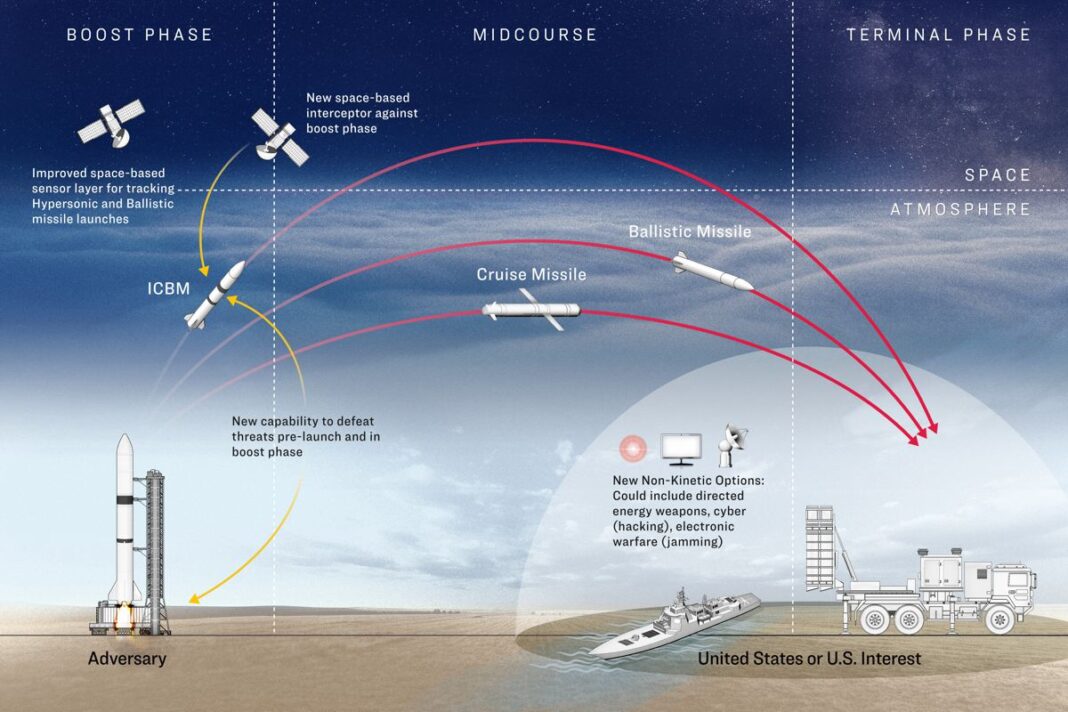
The Pentagon is tasked to plan an array of next-generation missile defenses including space-based missile interceptors and non-kinetic defenses.
The U.S. Missile Defense Agency is already searching for cutting-edge missile defense technologies after President Donald Trump signed an executive order calling for an “Iron Dome for America.”
The executive order gave the Department of Defense 60 days to evaluate the U.S. missile defense network and overhaul it with hypersonic weapon sensors, space-based missile interceptors, and other so-called “non-kinetic” missile defense capabilities.
Trump has also tasked military leaders with conceiving new ways to stop incoming threats earlier than ever before, including before they launch.
Four days after Trump signed the order, the Missile Defense Agency published a request for information from arms industry insiders on promising advancements to meet Trump’s call for a better missile defense shield.
The quick turnaround suggests the Trump administration is urgently pursuing advanced new strategic defenses at a moment of growing U.S. competition with Russia and China.
Both nations have made advances in offensive strategic weapons technology in recent years, and the U.S. military has struggled to keep pace.
While Trump’s order calls for several new missile defense capabilities, a major focus is on evaluating what systems already exist and whether they’re deployed in the right manner to protect the United States and forward-deployed U.S. troops and allies.
Daniel Flesch, a senior policy analyst for the Allison Center for National Security at the Heritage Foundation, described Trump’s order as a holistic approach that expands on capabilities the U.S. military already has.
“Where are the gaps, and where do we need to develop or invest?” Flesch told The Epoch Times.
The launch trajectory of a strategic weapon like a nuclear-armed intercontinental ballistic missile (ICBM) is generally divided into three phases.
The “boost phase” is the initial stage as a weapon burns its propellant at launch. After a ballistic missile expends most of its propellant in the liftoff, it begins its main course of flight toward its target, known as the “midcourse.”
Finally, after reaching the apex of its trajectory, a ballistic missile will fall toward its target in what’s known as the “terminal phase” of its trajectory.
By Ryan Morgan








